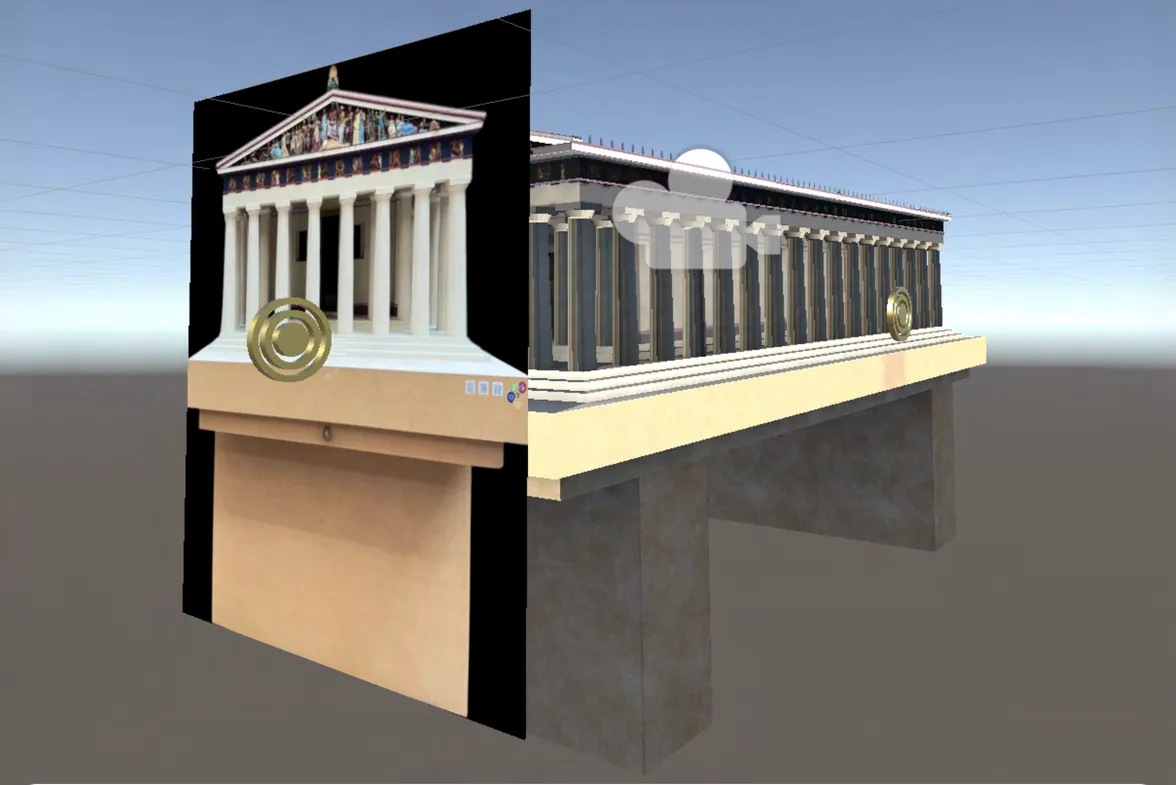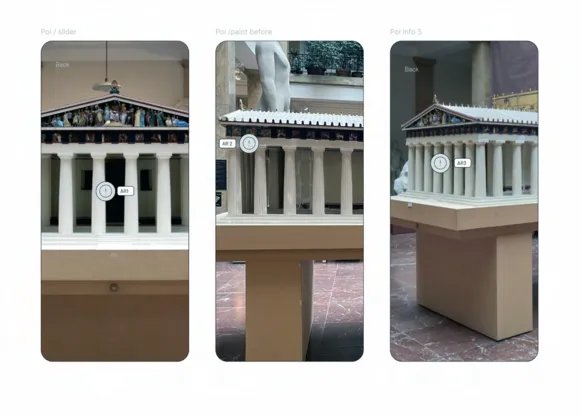
The Role of Augmented Reality in Facilitating Lay Understanding of Scaled Architectural Models: A Case Study of Parthenon Model
Ekin Celebi
Sommersemester 2024
This study investigates the use of Augmented Reality (AR) to enhance visitors’ under- standing and interaction with scaled architectural models in museum environments, using the Parthenon model from the Abguss Museum in Munich as a case study. For this case study, a mobile AR application called ParthenonAR was developed and the study examined whether the integration of ParthenonAR with the traditional static display of the Parthenon model in the museum enhances visitors’ understanding of the historical and architectural significance of the model.The study outlines the methodologies used to create the concept for the ParthenonAR mobile application, as well as the technical implementation and assessment of its functionality and effectiveness. The methodologies used include Multimedia Develop- ment Lifecycle for an iterative development process, Scenario-Based design for concept development and application design, photogrammetry and mobile AR development, which the study explains in detail.
In order to create an engaging, interactive, and enjoyable experience for the visitors, the key features of the ParthenonAR application included interactive visualizations of the Parthenon’s interior, historical comparisons of the model’s current and past looks, and digital reconstructions. A diverse group of participants later tested these features and the application. The results and user feedback were then evaluated to assess the effectiveness and success of this project. The results from the user tests highlighted that the ParthenonAR application was successful in enhancing engagement with the model and the learning outcomes obtained, leaving participants satisfied with their experience with the application.
Overall, the findings demonstrate that AR can significantly improve the visitor experience by making historical and cultural heritage more interesting and engaging by turning the objects into a source of information through added interactivity. In the end, this study provides valuable insights into the design, development, and implementation of AR applications in museum environments, especially for small-scale objects, and brings new research ideas for future projects that leverage AR for educational and cultural enrichment.

Figure 5.5: First AR Screen Wireframe

Figure 5.14: Retopologized photogrammetric model of the Athena Statue

Figure 5.15: Mesh structure of retopologized photogrammetric model the Athena Statue